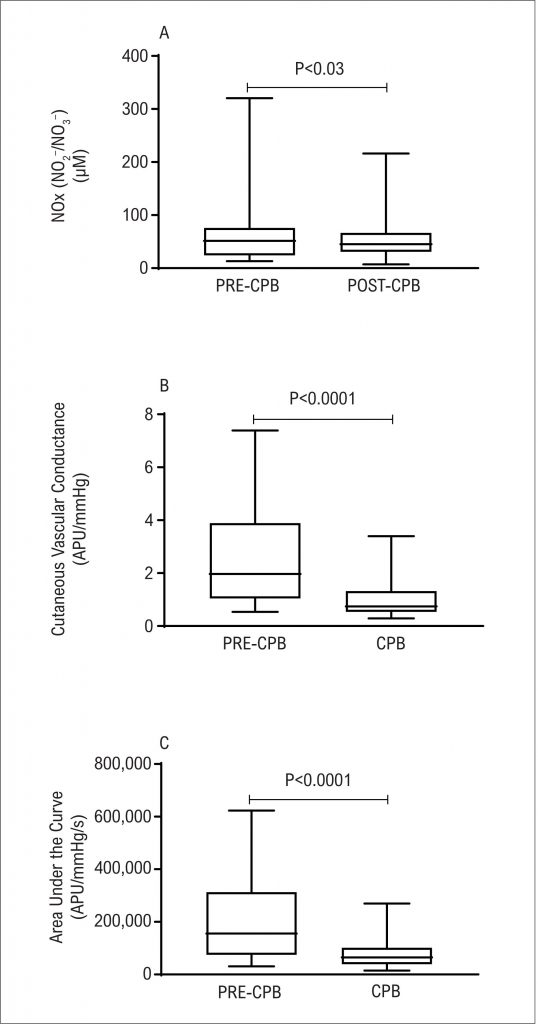Arq. Bras. Cardiol. 2021; 117(3): 554-557
Reduced Systemic Nitric Oxide Bioavailability Parallels Microvascular Endothelial Dysfunction during Cardiopulmonary Bypass
Introduction
Cardiopulmonary bypass (CPB) is currently performed in infants and newborns for surgical correction of congenital heart diseases (CHDs). CPB exposes the body to extreme, nonphysiologic conditions that initiate a systemic inflammatory response accompanied by vasomotor dysfunction, and can lead to multiple organ dysfunction. Additionally, CPB has been linked to activation and injury of endothelial cells, which is associated with global inflammatory response, triggering of the coagulation system and subsequent organ dysfunction, not only in adult patients, but particularly in infants and newborns.
Systemic microvascular dysfunction during CPB results in inadequate blood flow, organ perfusion and oxygen delivery to the tissues.4 We have shown, using laser Doppler perfusion monitoring (LDPM) (a non-invasive method coupled with local heating of the skin), that the microcirculatory bed of the skin of the forehead is an appropriate model for the study of microvascular reactivity and tissue perfusion in cardiovascular surgery with CPB in adults. Actually, local thermal hyperemia (LTH) is a useful method in the evaluation of systemic microvascular endothelial function., In addition, using LDPM, we demonstrated that microvascular dysfunction and hypoperfusion occur during CPB in surgical correction of congenital heart disease in infants and children, despite adequate macrohemodynamic parameters. The mismatch between macro- and microcirculation in severely ill patients with septic or cardiogenic shock, which can be misleading to an adequate clinical management of these patients, has also stimulated the search for new methods to monitor microcirculatory perfusion in the intensive care units.
[…]
522

